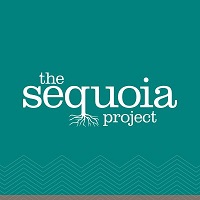 Healthcare Organizations are Exchanging More than 1.7 Million Clinical Documents per Month through Carequality
Healthcare Organizations are Exchanging More than 1.7 Million Clinical Documents per Month through Carequality
During The Sequoia Project’s (@sequoiaproject) Annual Meeting, one of its key initiatives, Carequality, reported tremendous growth since it became operational in July of 2016. To date, more than 1,000 hospitals, 25,000 clinics, and 580,000 health care providers are connected through the Carequality interoperability framework.
To put this in perspective, that represents more than 50% of all health care providers in the country.
“When we first kicked off planning efforts for Carequality in 2014, we knew it was going to be big,” said Mariann Yeager, president of The Sequoia Project. “We had many of the biggest names in health care – including health care providers, technology vendors, pharmacies and others – committing to making Carequality work and implementing the framework once it was completed. And with today’s revelation about the rapid increase and scale of Carequality’s current operations, we’re delighted. We’re proud to have the opportunity to work with each and every Carequality participating network and to celebrate their groundbreaking work to interconnect networks across the nation. The health care industry and government partners banded together to make Carequality a reality, and we’re now seeing the fruits of that labor.”
Illustrating the breadth of Carequality’s reach, in October 2017 alone, more than 1.7 million documents were shared among health care organizations through the Carequality Interoperability Framework. The rate of exchange is rapidly accelerating each month, as two million documents were exchanged in total for the first 12 months, and nearly as many are exchanged now monthly. With existing implementers continuing to onboard clients, and more than a half dozen implementers expected to go live in the first quarter of 2018, there will be continued growth.
“Carequality’s success stems from the core principles of inclusivity and openness we laid out during early planning meetings,” said Dave Cassel, Vice President of Carequality, “We brought together competing vendors, providers large and small, HIEs, government agencies, pharmacies, and other types of health care organizations, allowing everyone to be heard. Open conversation and debate was encouraged, and we embraced transparency and openness in all processes. As a result, we created a national interoperability framework that works, nationwide. Our implementing networks continue to attract more and more hospitals, practices, and medical groups. Additional networks are coming on line that connect payers, many more providers, and even patients themselves as direct participants in their care. Stay tuned, because the document exchange and participation numbers are going to get a lot bigger.”
Carequality was born out of industry demand, shaped by industry and government collaboration, and now it is succeeding through industry support and participation. The end result is a national interoperability framework that is making giant strides toward achieving nationwide connectivity for health information exchange.
What is Carequality?
Carequality is a national-level, consensus-built, common interoperability framework to enable exchange between and among health data sharing networks. Carequality brings together diverse group, including electronic health record (EHR) vendors, record locator service (RLS) providers and other types of existing networks from the private sector and government, to determine technical and policy agreements to enable data to flow between and among networks, platforms, and geographies.
The Carequality Framework provides the essential elements for trusted national exchange, including common rules of the road (including a Trusted Exchange Framework), well-defined technical specifications and a participant directory.
About Carequality
Carequality is a public-private collaborative that facilitates agreement among diverse stakeholders to develop and maintain a common, national-level interoperability framework enabling exchange between and among data sharing networks. Carequality brings together a diverse group of representatives from the private sector and government to come to collective agreement on how to enable data to flow seamlessly between and among networks and providers, much like the telecommunications industry did for linking cell phone networks.
About The Sequoia Project
The Sequoia Project is a non-profit, 501c3, public-private collaborative chartered to advance implementation of secure, interoperable nationwide health information exchange. The Sequoia Project supports multiple, independent health IT interoperability initiatives, most notably: the eHealth Exchange, a rapidly growing health data sharing community of exchange partners sharing under a common trust framework and a common set of rules; and Carequality, which is a national-level, consensus-built, common interoperability framework to interconnect and enable exchange between and among existing data sharing networks, much like the telecommunications industry did for linking cell phone networks.
